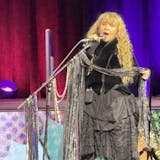Frida! Let one name suffice: the painter, exotic and icon, her persona so powerful she saturates this partial biography, "Frida in America."
Little known when she first left Mexico in 1930, Frida Kahlo now outshines her husband, Diego Rivera, in part because she was the greater artist, Celia Stahr argues. It is also in part because she made easel paintings, so easily reproduced, while Diego covered huge walls with murals, one of which was famously obliterated because it lionized Communists.
"Frida in America" is the latest addition to a long shelf of works about Kahlo, including Barbara Kingsolver's "The Lacuna" and nearly 300 other titles in the Library of Congress catalog.
Acknowledging Hayden Herrera's landmark biography, Stahr intends her book to augment the canon: "Focusing on these pivotal years of her development allows for a deeper understanding of this gifted woman and artist," she writes.
Writing in both feminist and academic perspectives, the University of San Francisco teacher examines Kahlo's first three years in "Gringolandia."
Settling briefly in San Francisco, New York and Detroit, Kahlo and Rivera mixed with social and art world elites. Much of the attention paid to Frida came because she was the headliner's wife and an oddity of the time, a professional woman. Yet as Stahr recounts, her art and artistry were rising during these years. America stimulated her talent even as it boosted her ego and many splendored image.
Kahlo had physical problems: a leg withered by polio, spina bifida, scoliosis and chronic pain from a trolley crash. Above all this, she possessed the extraordinary beauty that she captured in solemn or torturous self-portraits, thick brows and mustache, the implied and consummated sexuality both conventional and otherwise. Stahr doubles down on feminist issues while she expresses lush appreciation of Frida's flamboyance, her spectacular attire, her rising celebrity, her exceptional talent.
There are interesting contrasts, both cogent and unintended. Kahlo's art was direct and ambiguous, erotic and androgynous, surrealist and mythic. Stahr describes her charismatic subject in lackluster terms: "she was an unusual combination of a deep soul with a vivacious love for life." And, "Frida's thoughts turned more and more to the fetus growing in her uterus." (She later miscarried.)


